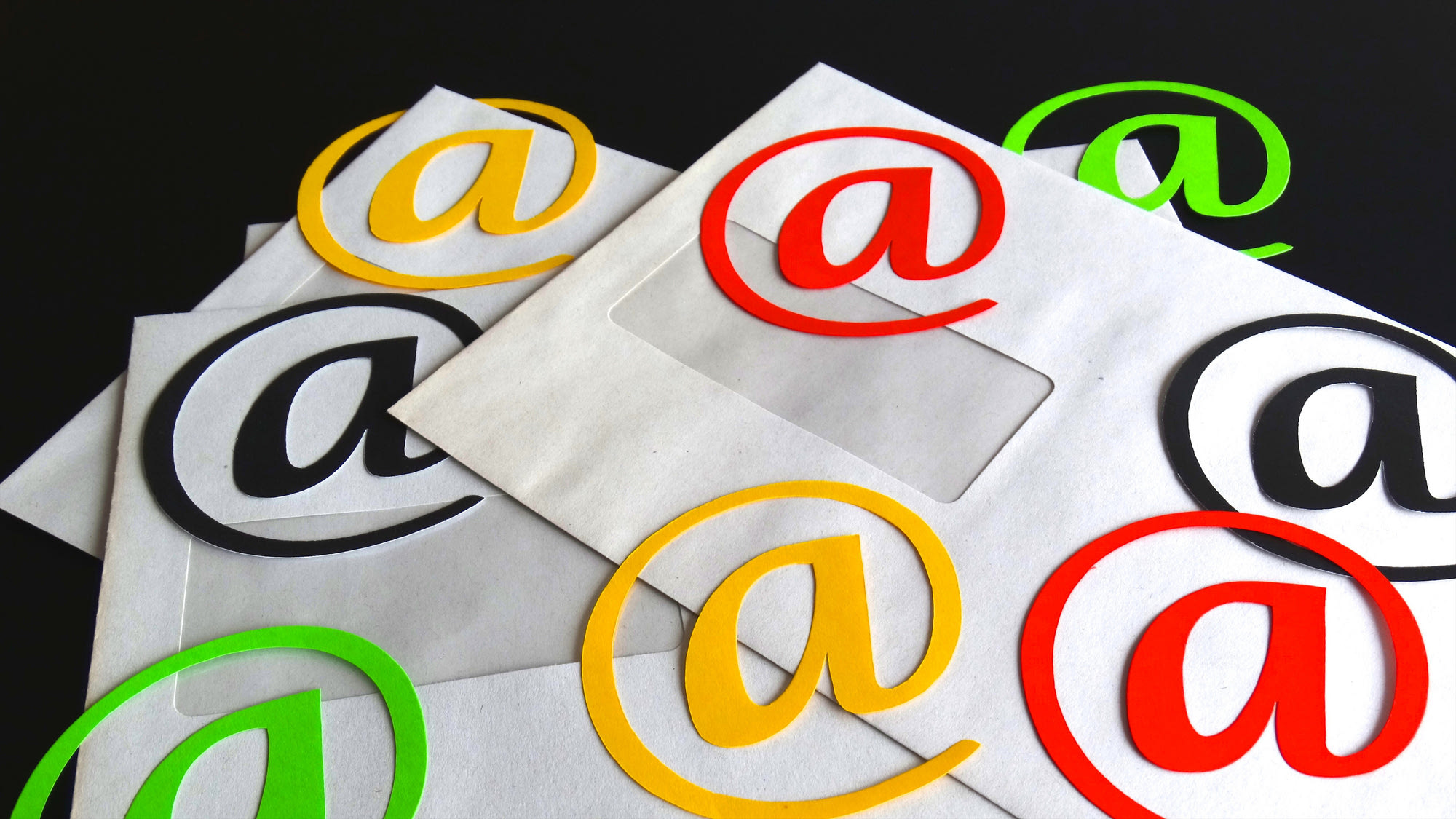Ever been to the dentist? Everyone hates it: you get the disappointment, crossed arms, and the scolding about how you’re not brushing your teeth enough. And when you think about it:
Email list hygiene operates exactly the same way!

Now domain warming isn’t just about the emails you send. It’s also about who you’re sending them to! And sending to your good contacts and bad contacts can hurt your sender reputation and deliverability. So let’s play dentist here for a moment in the world of email marketing and recognize that without a doubt you’re going to have some cavities in that email list of yours.
The questions are how did they get in my email list? — why are they there? — and how do I get rid of them?
What influences your email list hygiene
Several factors come into play when you forget to scrub on a daily basis. Such as:
- Inactive contacts
In general, that’s going to happen for a portion of your contacts, but the first thing you should always do when you spot any of those inactive items is to remove them completely. However, it’s important to know when in general contacts go “inactive.”
A general rule of thumb? If a previously active contact hasn’t engaged with a single one of your emails in the past three to six months, it’s a safe bet you can remove them. However…. Don’t just delete them completely.
Instead, move them to another segmented list entitled “unresponsive” for remarketing purposes. A lot of things can happen in a user’s inbox: maybe they’re not getting your emails due to somehow getting them stuck in a spam trap, or nothing’s resonated with them quite yet, and they’re just too busy.
remarketing purposes. A lot of things can happen in a user’s inbox: maybe they’re not getting your emails due to somehow getting them stuck in a spam trap, or nothing’s resonated with them quite yet, and they’re just too busy.
The point is you don’t know the story. But you know yours. And there’s no greater story than cleaning up your email list by revitalizing some of those contacts (instead of just ditching them completely).
- Role accounts
This happens all the time, and you shouldn’t be too worried. In fact, these most likely aren’t “cavities.” They’re more like the slivers of popcorn stuck between the teeth you struggle getting out with toothpicks. They’re annoying. They need to be removed. But they won’t be the death of you.
Generally these “role account” email addresses are task-oriented ones, such as the ones like:
- abuse@
- postmaster@
- info@
- support@
And so on and so forth. In a nutshell, these accounts will never open your emails for good reason: they’re not for receiving, they’re for sending their own stuff. So delete them.
But specifically be wary of what are known as “typo spam traps,” which some domains love having in sub-domain format. They’re close approximations of a real mailbox provider. Examples would be like “yahooo.net” or “gmall.com,” which aren’t real. But because we all have fat fingers, sometimes we mistakingly have them in our email lists.
Simply put…. Delete them.
- Low engagement
It’s a fact that some contacts just aren’t interested. They, however, haven’t bothered to unsubscribe or even complain. So…. They just ‘sit there’. Doing nothing.
Think of email scrubbing as a way to ‘trim the fat’. Ask yourself these important questions:
- Did these low-engagement contacts consent to receiving your emails?
- Have they made a purchase in the past few months?
- Have they even clicked any of your links at all?
If the answer’s ‘no’ to all of these, better just let them go. Don’t even move them to an ‘unresponsive’ segmented list.
We know this sounds like a lot of work, but here’s some help along the way:
3 tips in maintaining clean email hygiene
Now you know what to look for. The question is how to do it right:
- First regularly audit that email list
Put it on a schedule. Like, once a month. You do a one-through on all the contacts just to make sure all of those addresses are absolutely valid. The good news is it’s easy to check on them. Simply filter for those email addresses that have bounced and/or haven’t engaged in any way.
- Don’t just segment, learn who they are
You almost have to be ridiculously anal about moving certain subscribers to specified lists — everything from basing them on geographical location to even age ranges. But the most important thing in doing that is getting to know what these subscribers want and why.
By zeroing in a particular customer persona, you can send what they want to read and adjust accordingly as you learn more about what resonates with them the most, constantly tweaking your messaging to fit the mold.
- Consider the double opt-ins
The initial approach to new contacts is to have that double opt-in put in place. Basically you’re confirming their initial subscription with a “welcome email,” — the “second opt-in” — verifying their identity and cultivating engagement with some open-ended questions and maybe surveys to warm them up even more.
But don’t put that double opt-in with every email sequence you have for all your segmented lists! That’s when having that extra step put in place for everything gets too cumbersome.
Again, though, we get it: it’s a lot to keep track of!
Now domain warming isn’t just about the emails you send. It’s also about who you’re sending them to! And sending to your good contacts and bad contacts can hurt your sender reputation and deliverability. So let’s play dentist here for a moment in the world of email marketing and recognize that without a doubt you’re going to have some cavities in that email list of yours.
The questions are how did they get in my email list? — why are they there? — and how do I get rid of them?
What influences your email list hygiene
Several factors come into play when you forget to scrub on a daily basis. Such as:
- Inactive contacts
In general, that’s going to happen for a portion of your contacts, but the first thing you should always do when you spot any of those inactive items is to remove them completely. However, it’s important to know when in general contacts go “inactive.”
A general rule of thumb? If a previously active contact hasn’t engaged with a single one of your emails in the past three to six months, it’s a safe bet you can remove them. However…. Don’t just delete them completely.
 Instead, move them to another segmented list entitled “unresponsive” for remarketing purposes. A lot of things can happen in a user’s inbox: maybe they’re not getting your emails due to somehow getting them stuck in a spam trap, or nothing’s resonated with them quite yet, and they’re just too busy.
Instead, move them to another segmented list entitled “unresponsive” for remarketing purposes. A lot of things can happen in a user’s inbox: maybe they’re not getting your emails due to somehow getting them stuck in a spam trap, or nothing’s resonated with them quite yet, and they’re just too busy.
The point is you don’t know the story. But you know yours. And there’s no greater story than cleaning up your email list by revitalizing some of those contacts (instead of just ditching them completely).
- Role accounts
This happens all the time, and you shouldn’t be too worried. In fact, these most likely aren’t “cavities.” They’re more like the slivers of popcorn stuck between the teeth you struggle getting out with toothpicks. They’re annoying. They need to be removed. But they won’t be the death of you.
Generally these “role account” email addresses are task-oriented ones, such as the ones like:
- abuse@
- postmaster@
- info@
- support@
And so on and so forth. In a nutshell, these accounts will never open your emails for good reason: they’re not for receiving, they’re for sending their own stuff. So delete them.
But specifically be wary of what are known as “typo spam traps,” which some domains love having in sub-domain format. They’re close approximations of a real mailbox provider. Examples would be like “yahooo.net” or “gmall.com,” which aren’t real. But because we all have fat fingers, sometimes we mistakingly have them in our email lists.
Simply put…. Delete them.
- Low engagement
It’s a fact that some contacts just aren’t interested. They, however, haven’t bothered to unsubscribe or even complain. So…. They just ‘sit there’. Doing nothing.
 Think of email scrubbing as a way to ‘trim the fat’. Ask yourself these important questions:
Think of email scrubbing as a way to ‘trim the fat’. Ask yourself these important questions:
- Did these low-engagement contacts consent to receiving your emails?
- Have they made a purchase in the past few months?
- Have they even clicked any of your links at all?
If the answer’s ‘no’ to all of these, better just let them go. Don’t even move them to an ‘unresponsive’ segmented list.
We know this sounds like a lot of work, but here’s some help along the way:
3 tips in maintaining clean email hygiene
Now you know what to look for. The question is how to do it right:
- First regularly audit that email list
Put it on a schedule. Like, once a month. You do a one-through on all the contacts just to make sure all of those addresses are absolutely valid. The good news is it’s easy to check on them. Simply filter for those email addresses that have bounced and/or haven’t engaged in any way.
- Don’t just segment, learn who they are
You almost have to be ridiculously anal about moving certain subscribers to specified lists — everything from basing them on geographical location to even age ranges. But the most important thing in doing that is getting to know what these subscribers want and why.
By zeroing in a particular customer persona, you can send what they want to read and adjust accordingly as you learn more about what resonates with them the most, constantly tweaking your messaging to fit the mold.
- Consider the double opt-ins
The initial approach to new contacts is to have that double opt-in put in place. Basically you’re confirming their initial subscription with a “welcome email,” — the “second opt-in” — verifying their identity and cultivating engagement with some open-ended questions and maybe surveys to warm them up even more.
But don’t put that double opt-in with every email sequence you have for all your segmented lists! That’s when having that extra step put in place for everything gets too cumbersome.
Again, though, we get it: it’s a lot to keep track of!

Which is why Apello loves to get you squared away on all of those aspects! Email marketing isn’t easy. But with the right tools, you’ll have lists that are squeaky clean and capable of pulling in engagements that are profitable and relentlessly retained for continued growth.
Ready to fill some cavities?


Recent Comments